

SOUTHEAST
March 2004

4 of 4


SOUTHEAST
March 2004


4 of 4
In the morning Richard and his friend Henry take us to explore a different kind of habitat with its own of mix
of herps. In scrub forests that cover the sandhills of the southeast, Gopher Tortoises dig deep tunnels in the loose
soil, becoming landlords in the process. Snakes and frogs take up residence in the convenient underground shelters,
sometimes sharing an active burrow with their host, sometimes occupying abandoned ones.
We spread out and search for semi-circular mounds of white sand piled in front of burrow entrances. Shining
with a mirror we can peer down the holes, half-round excavations that perfectly match the domed shell of a Tortoise.
In one instance, we can see a big male about six feet down, when to our surprise, he charges! Races right up the
shaft, stopping just short of the surface to plug the hole, backs down . . . then does it again! With such a tight fit in
his sandy cylinder, sorta reminds us of a piston with legs.
On the surface, all we can manage to find is this juvenile, just a little bit bigger than a golf ball . . .
. . . and Richard discovers the scattered ribs of a large snake, long gone, but still evidence of what might be
around.
Danny spots a piece of trash on an old burrow, a length of bicycle tire someone carelessly threw away. “What’s
that doing here?” he wonders. Then suddenly the recognition hits him: Indigo! The holy grail of eastern herps!
So excited he can barely speak, Danny manages to get our attention. Ron and I rush over to join him, start
shouting
―
our first-ever Indigo in the field!
―
and we celebrate a herper’s high that lasts for weeks.
One other unusual find before leaving the sandhills. As we are hiking out, a young man greets us along the
trail. He asks if we’re looking for snakes, so we stop to chat a bit. Seems he is a fellow herper just passing through
and thought he would check out this area since it was on his way. Then, in the course of conversation, he looks at
Ron and says, “I know you from somewhere . . what’s your name?” So my brother begins to reply, “Ron . . .“ but
before he can finish, the stranger says, “ . . . Grunwald! I’ve seen your website!” I was amazed, not just at the
coincidence of meeting someone in the middle of nowhere who knew my site, but that he actually recognized Ron
just from my reports! Never know what you’re going to find when you go herping . . . or who’s going to find you.
Richard suggests we go flip tin, so it’s on to some woods where a trail is lined with trash.
Danny positions himself behind a large blue appliance and pulls while the rest of us lift the heavy object from
the front. As the metal tilts upward we let out a yell, and Danny’s going “What? What?!” since he can’t yet see the
snake we’ve uncovered: an incredibly colorful Copperhead with a bold and aberrant pattern.
Farther up the trail we start peeling back sheets of tin that are stacked on each another. Midway through the
pile a pinkish coil with brown chevrons is revealed, unravels, and starts to slither away. Make our catch, and with
the last find of the day, Ron and Danny see their Canebrake at last!
After saying good-by to Richard, we are on our own again for the last day of the trip. Our first site looks so
promising, but all we find is this pretty salamander.
We return to the cypress swamp where we found our first Copperhead. While walking through the woods I
spy the shell of a worn-out stump. Goover to have a look. At first I don’t see anything, then gradually I realize I am
staring straight down at a pair of Copperheads perfectly camouflaged in the leaf litter. Eventually one of them
spooks and takes off, retreating to a dark pocket in the stump.
From the middle of the road we rescue this Slider, returning it to the swamp from where it had emerged
covered in duck weed.
Forgot to mention that all this time Ron had yet to find a snake on his own. It’s highly unusual for him to be
skunked, but we figured all the luck had flowed to Danny (Scarlet King! Diamondback! Indigo!), it being his first
time herping in the South. And then in a mixed forest of pine and oak, our very last site, Ron peeks under some
peeling bark and finally redeems his record with this juvenile Yellow Rat Snake.
At this point, you may be wondering, “What, no Corns or Kings?” Yep, that’s right. We were hoping for one of
the region's iconic herps, the famous Okeetee Corn Snake. Although among the most common species in the area,
ironically, it proved to be our most elusive target; we didn't see even one. We heard of numerous Corns being found
the week before we arrived, but apparently the cold temps drove them back underground. Nor did we come across
any Eastern Chain Kingsnakes, another frequently-seen snake we just couldn't find.
It became a running joke. Range extensions in Costa Rica? No problem. Endangered species? Right this way.
Dime-a-dozen species? No such luck! Actually, it wasn't so bad for me and Ron (we've found plenty of Corns and
Kings on previous trips), but this was Danny's first time in South Carolina and he was just jonesing to see an Okeetee
Corn or an Eastern King. The curse of common snakes not only continues (
s
ee my report from ARIZONA 2003
April)
―
obviously it's transferable!
So, not to be greedy or anything (forfeited that right when we found the Indigo) but we still have SC & GA
herps to look forward to.
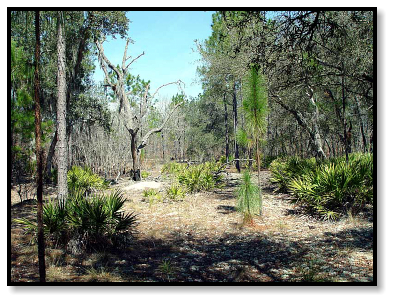
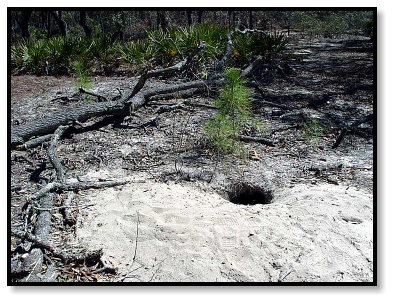
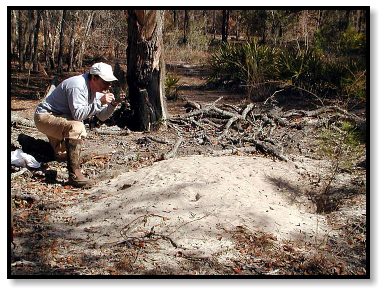
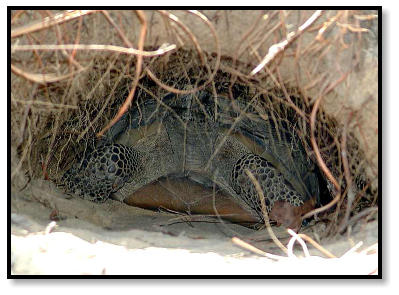
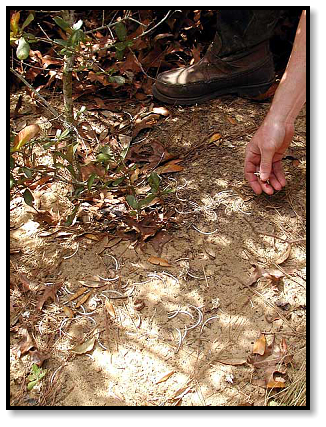
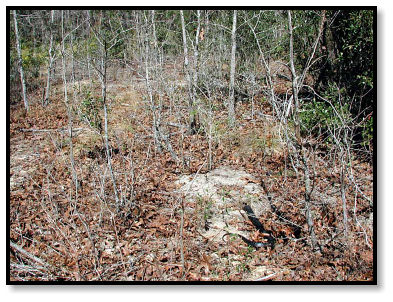
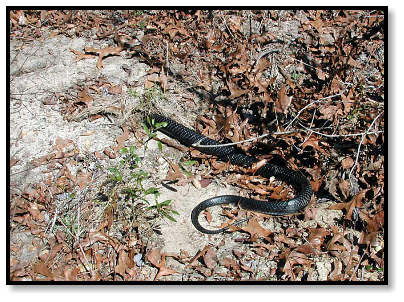
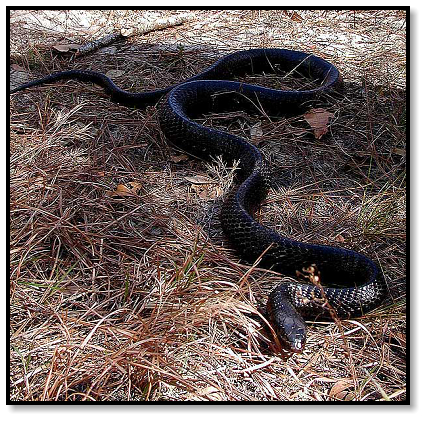
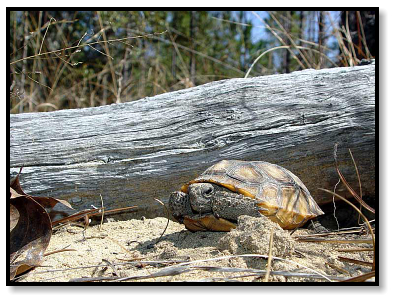
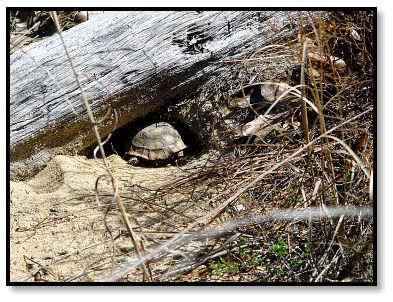
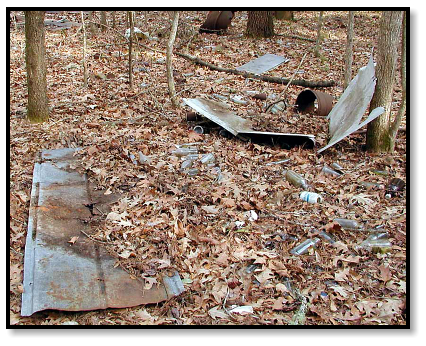
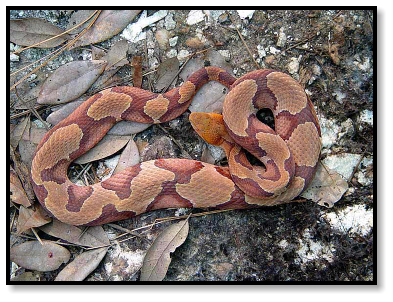
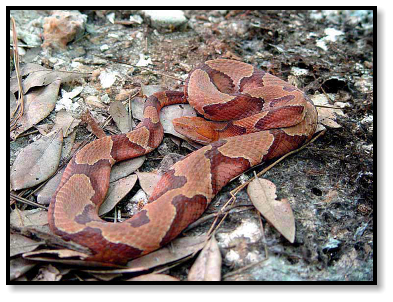
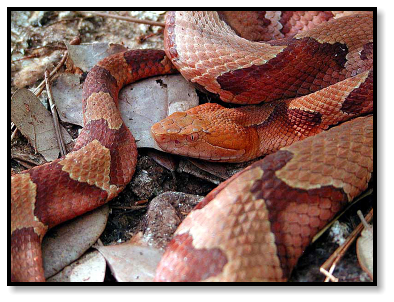
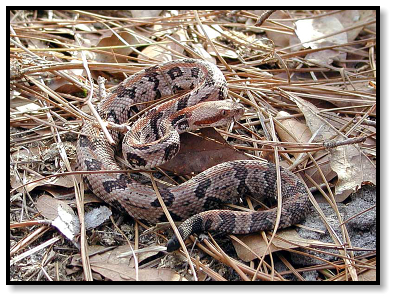
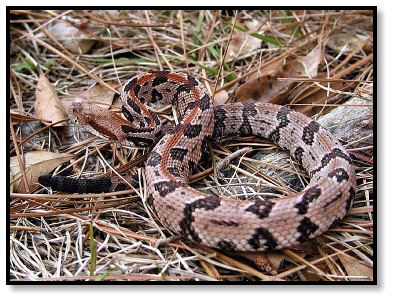
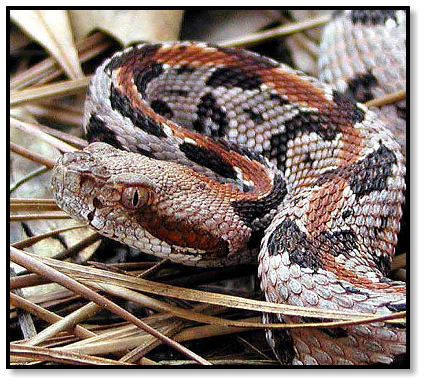
Gopher Tortoise
Gopherus polyphemus
Eastern Indigo Snake
Drymarchon corais couperi

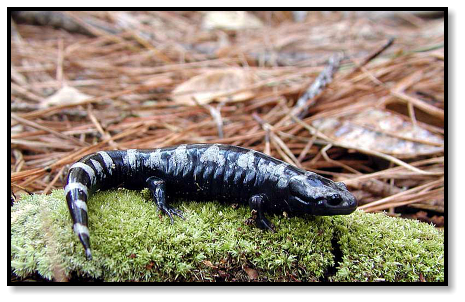
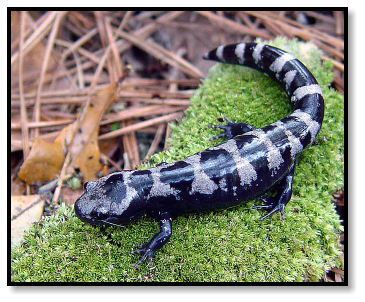
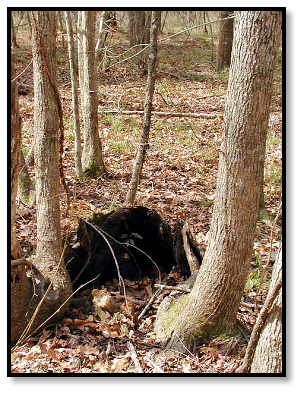
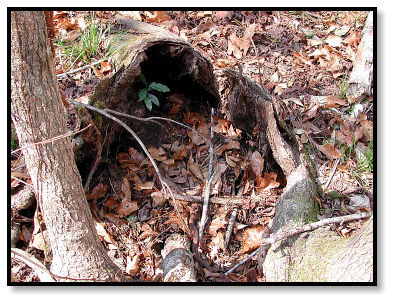
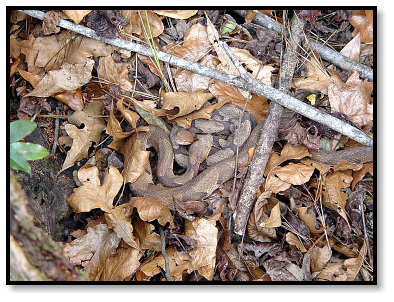
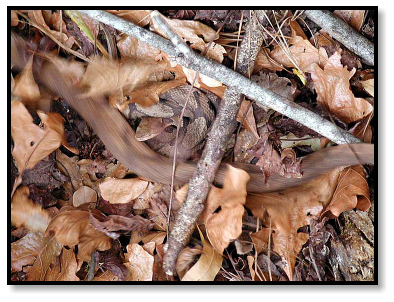
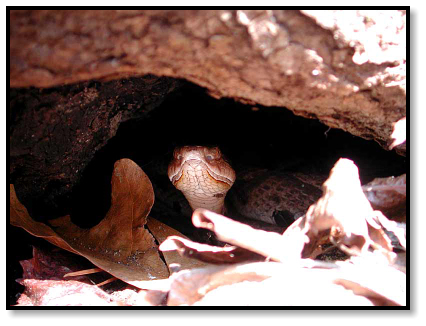
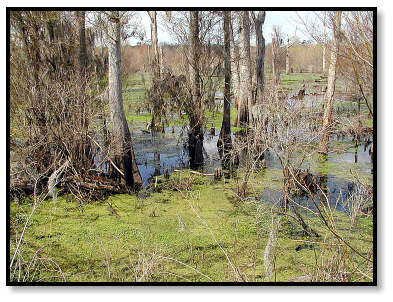
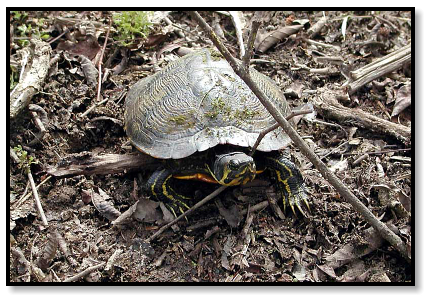
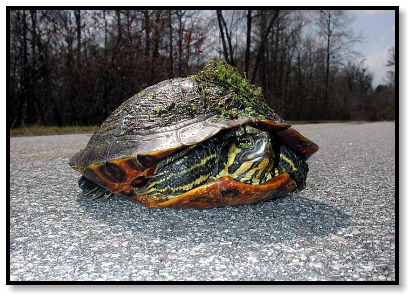
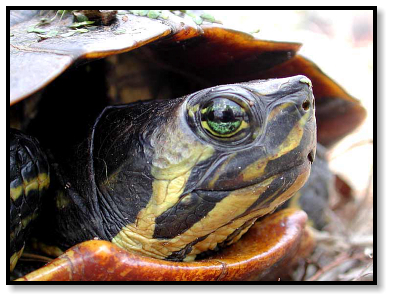
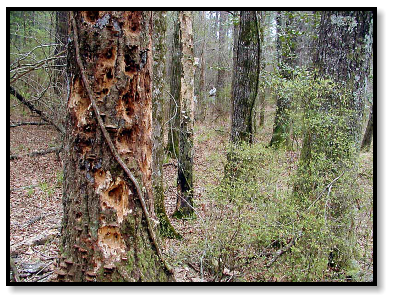
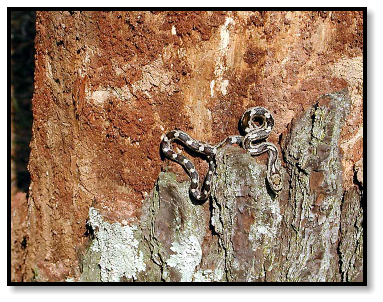
Marbled Salamander
Ambystoma opacum
Yellow-bellied Slider
Trachemys scripta
© Danny Mendez








